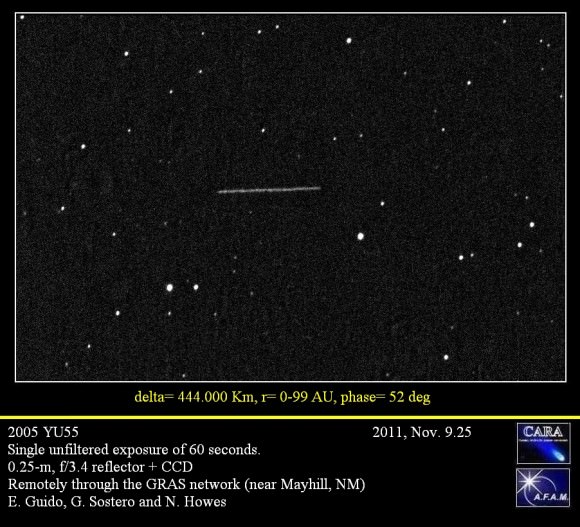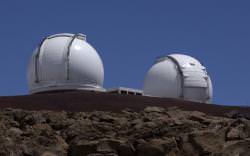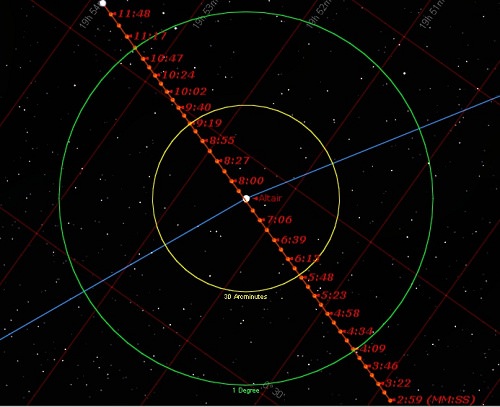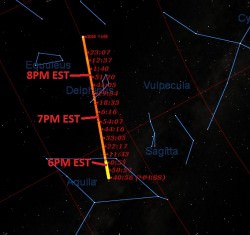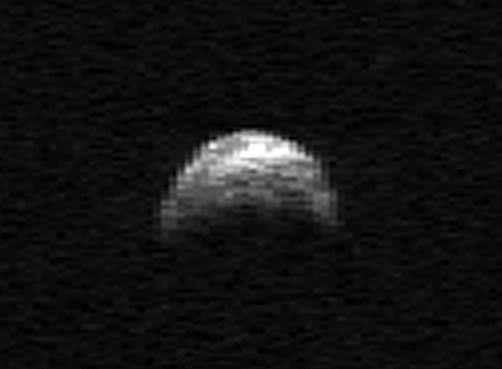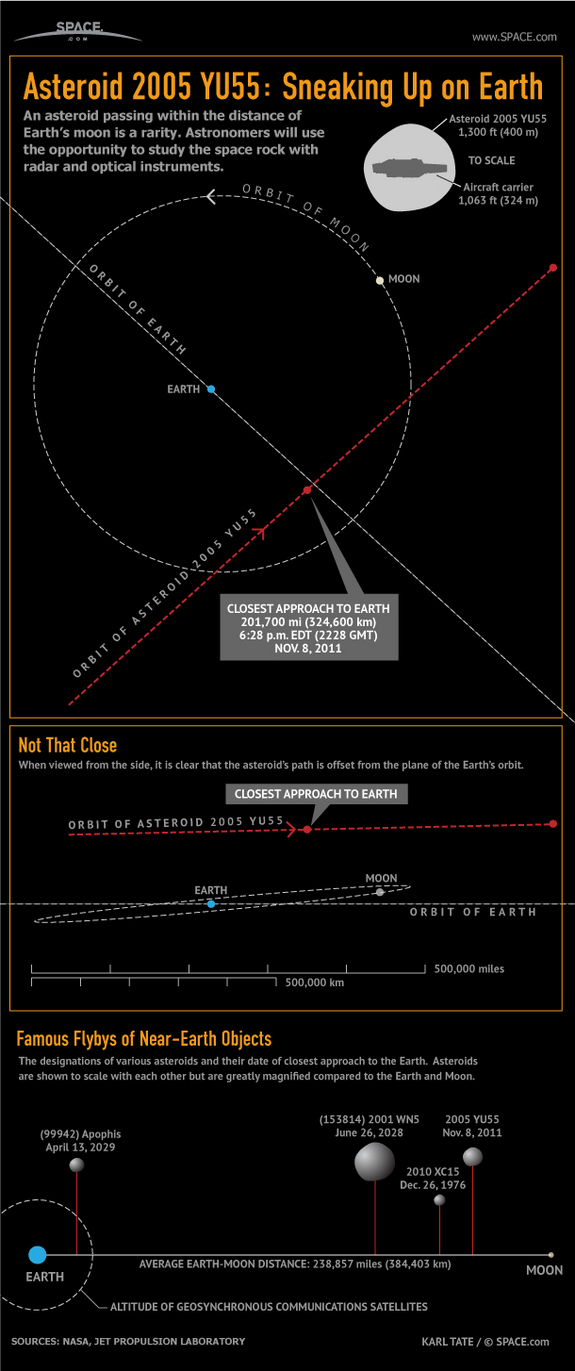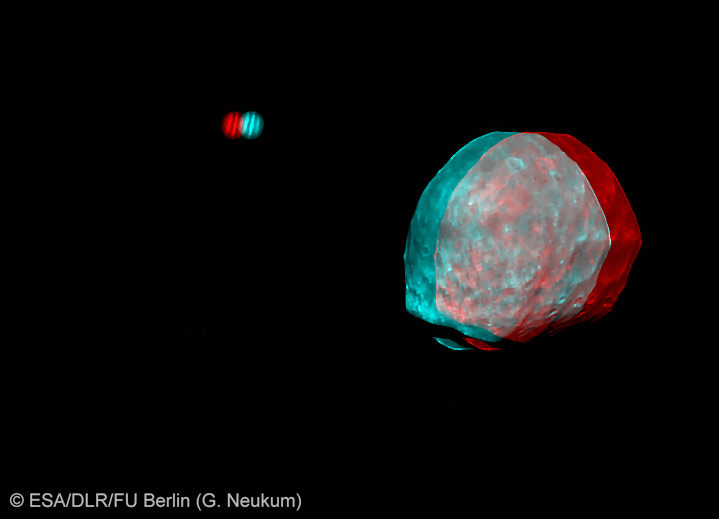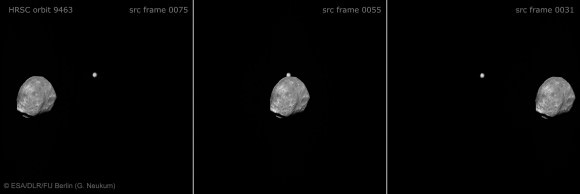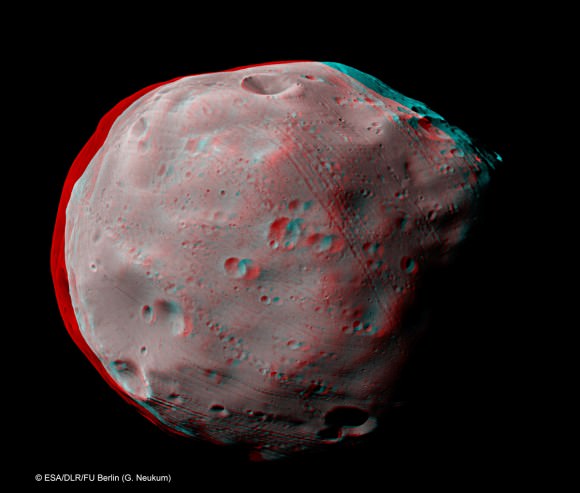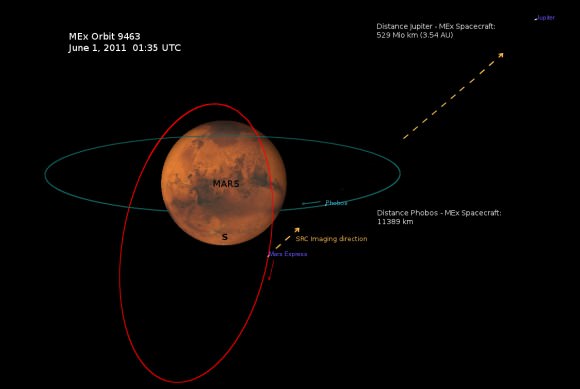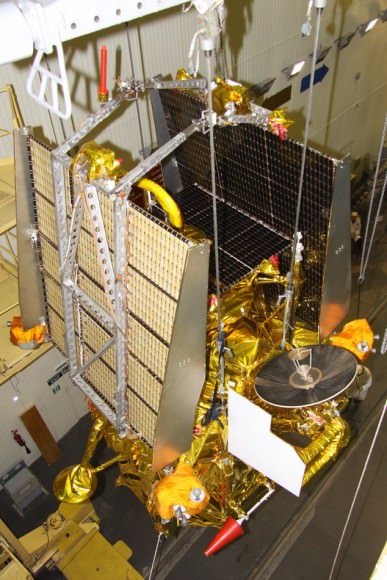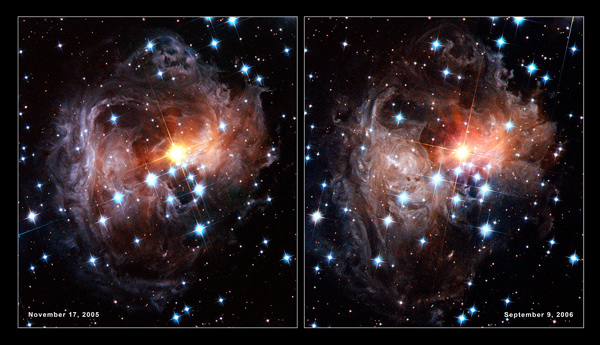[/caption]
A 400-meter-wide asteroid created a lot of “buzz” as it buzzed by Earth, with its closest approach on November 08, 2011 at 23:28 Universal Time (UT). The Near-Earth Asteroid 2005 YU55 passed within 319,000 km (202,000 miles or 0.85 lunar distances, 0.00217 AU) from Earth’s surface. Later, it safely passed our moon at distance of 239,500 km (148,830 miles ). Astronomers from around the world trained their telescopes on this object, hoping to capture images and learn more about this dark space rock.
Above is an animation from the team of Ernesto Guido, Giovanni Sostero and Nick Howes, remotely using the the GRAS Observatory near Mayhill, New Mexico USA with a 0.25-meter telescope, f/3.4 reflector and a CCD camera. The trio said that at the moment of their observing session the asteroid was moving at about 260.07″/min and it was at magnitude ~11. You can see more images and details on their Remanzacco Observatory website. A single image they took is below, along with other observations from various points around the globe, including an infrared image taken with the Keck Observatory.
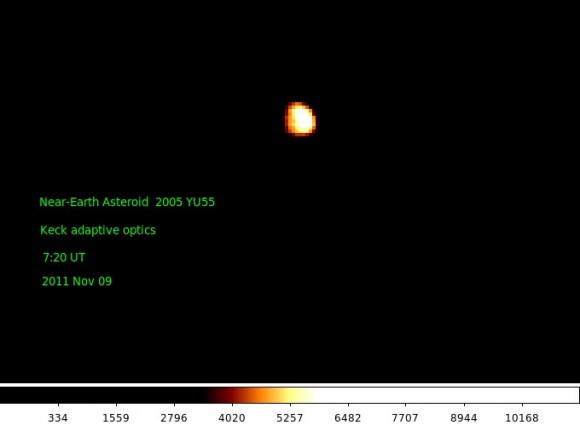
The Keck Observatory hosted a live webcast of their observations of the asteroid, hoping to get infrared images and perhaps a three-dimensional view of the asteroid with one of the world’s largest optical/infrared telescopes. They also hoped to be able to look for moons around the asteroid, as about 20% of asteroids have “moons” orbiting them. Battling delays from fog at the summit of Mauna Kea, they team had to wait until conditions cleared, which unfortunately meant the asteroid was farther away when they were able to take a one-second infrared observation. Principal Investigator Bill Merline said it may take days to process this raw data, so look for a more refined image from the team soon. The webcast was a lot of fun, as they showed the events going on insides the observing rooms on both the summit and Waimea, and answered questions from viewers.
This video above is from Jason Ware from Plano, Texas USA who observed Asteroid 2005 YU55 with a 12 inch telescope to create the video.
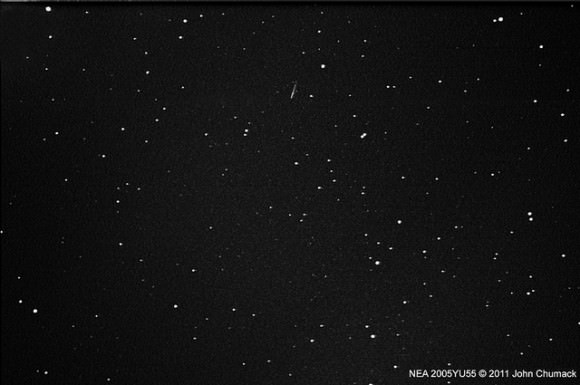
John Chumack of Galactic Images in Ohio took this image of the asteroid on 11-08-2011 at 07:18pm E.S.T., a 10 second exposure using a 16″ telescope and a QHY8 CCD. John also created a video, which is available on Flickr.
Peter Lake from Australia, has a telescope in New Mexico. He took a series of images at around 03:00 UTC on Nov. 9, using a 20-inch Planewave with a FLI PL11002M. The image field is 4008 X 2675 pixels and about 0.91 arc secs per pixel, so it passed at about 500 arc sec per minute, Lake said.
This video was taken by Steven Conard at the Willow Oak Observatory in Gamber, Maryland USA, with observations on November 9, 11 with the WOO C-14 telescope. This one has a special bonus–a satellite passes through the field as well.
We’ll add more images and video as they become available. Add your images to our Flickr group and we’ll post them.
Asteroid 2005 YU55’s flyby is the closest approach by an object of this size for the next 16 years. In August 2027, AN 10 is going to come within about one lunar distance from Earth. Astronomers estimate this asteroid is anywhere from 1/2 to 2 kilometers in diameter.
Just six months later, 2001 WN5, a 700-meter-wide asteroid will fly between the Earth and the Moon in June 2028, followed by Apophis on April 13, 2029.


